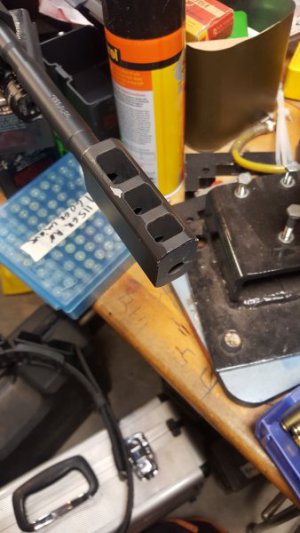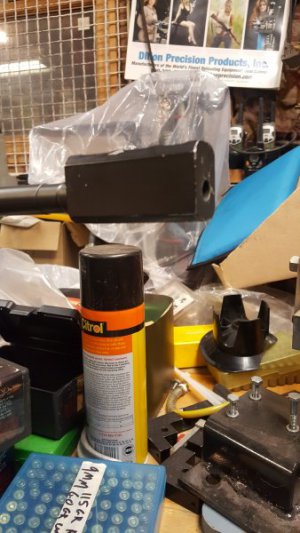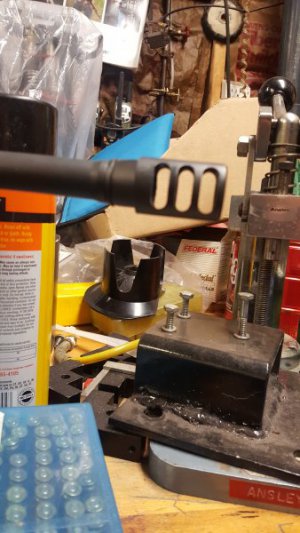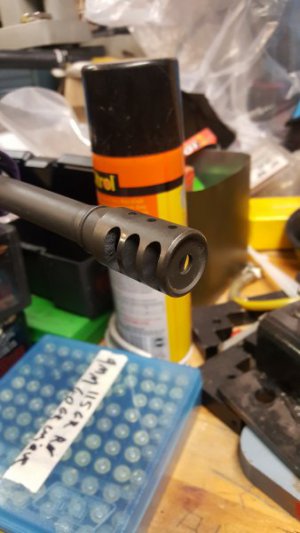- Joined
- Oct 3, 2015
- Messages
- 982
Expansion chambers don't work at all. The large gap in the middle lets the gas bypass the bullet and escape the muzzle before the bullet does. The basic premise is to redirect the gas into a neutral direction, which would be 90 degrees to the bore. The expansion rate of the gas is approx 4700 fps, well past the speed of the bullet, so it will always find a way around it, especially if an expansion chamber is longer than the bearing surface of the bullet.


 Look up a few posts and this is the style I've been making . Like I said , I haven't shot the gun with them on yet , so I don't know what to expect .
Look up a few posts and this is the style I've been making . Like I said , I haven't shot the gun with them on yet , so I don't know what to expect .



